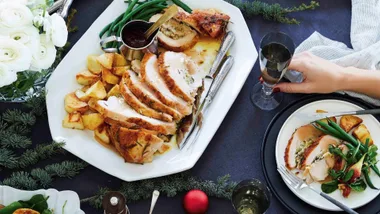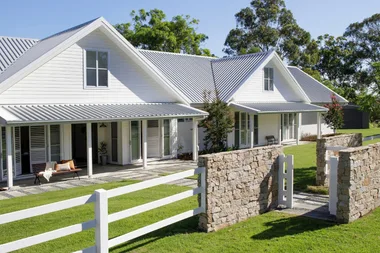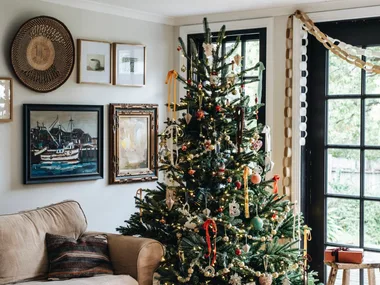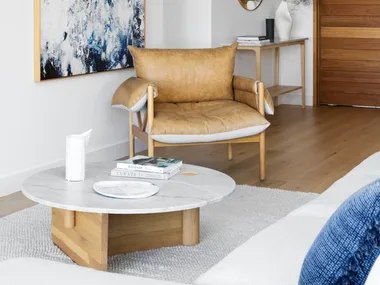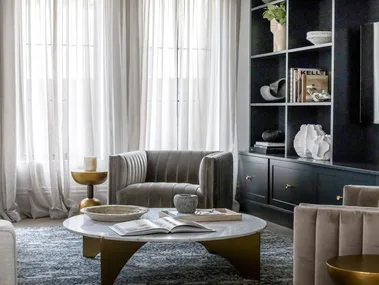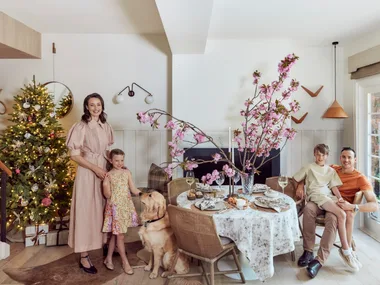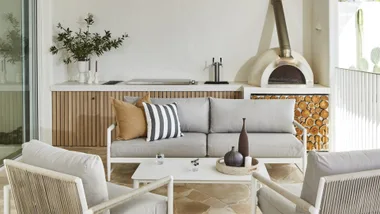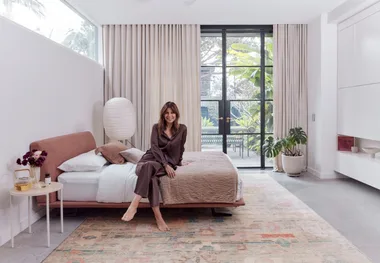“I have several beautiful wooden printing blocks: some abstract-looking, rectangular, French ones, as well as several Indian blocks,” says British decorating doyenne, Annie Sloane of her collection.
For this cushion, the decorator has put her collection to use, calling on the ancient Indian craft of block printing – a diy craft technique for adults and kids that uses chunky blocks of carved fine-grained wood found at craft fairs and specialist stores. Though perfect for a cushion, the technique translates just as well to curtains, lampshades, table runners and bedding. Anything goes, so long as the fabric isn’t too coarse for the design.
“Really fine block designs have to be printed on a delicate fabric,” she says. “More robust designs require a bit of texture in the fabric.” The secret, she says, is to look at the smallest parts of the carving and compare them to the fabric weave. “If the weave is bigger, the design won’t show up clearly.”
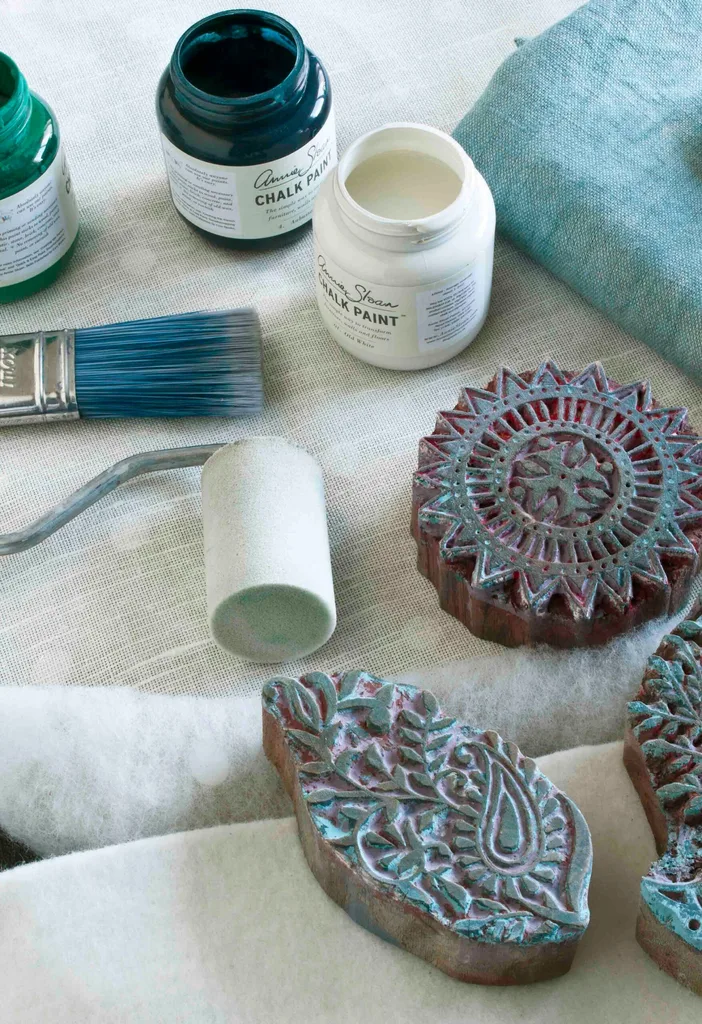
Supplies at the ready.
(Credit: Photographer: Christopher Drake © CICO BooksRRP)you will need
Chalk Paint by Annie Sloan in Aubusson Blue, Florence, and Old White (buy it online or try Porter’s Chalk Emulsion in Black Swan, Green Velvet and Chintz Grey)
Batting (wadding)—i.e. the type often used for quilting—or something equally soft, as the blocks are hard on the table and need something soft to press into.
Table protector (such as an oilcloth), to stop paint going onto and sticking to the table.
Medium-weave linen (enough to make the cushion, plus some extra to try out the design).
Wooden printing blocks from India.
Small sponge roller.
Painter’s tray.
Iron and ironing board.
Cushion insert, to fit the size of cushion cover.
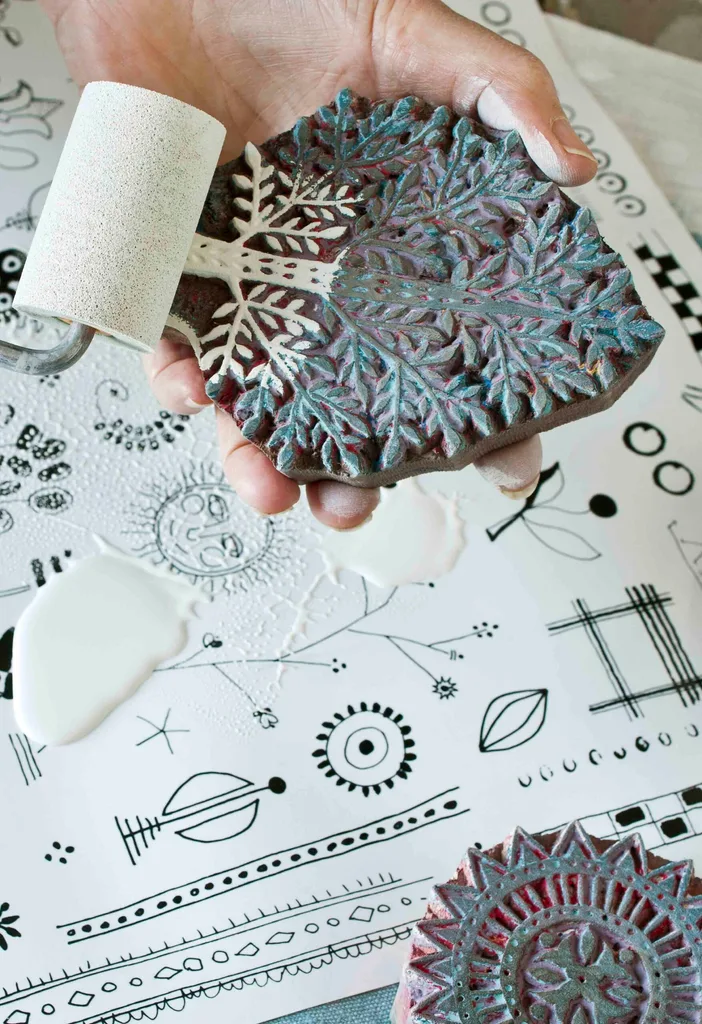
The more delicate the carving, the finer the fabric required.
(Credit: Photographer: Christopher Drake © CICO BooksRRP)method
Step 1. Cover the table with the batting (wadding) and table protector, ensuring the surface is soft, but firm. Put the fabric on the table. For this cushion, the fabric was dyed beforehand with blue chalk paint. For added interest, Annie dyed the fabric for the reverse side in green and then printed the design in white.
Step 2. Experiment on a spare piece of fabric, to figure out exactly how much pressure to apply and how much paint to use. The first one or two designs won’t print as well until the paint has wet the wooden block sufficiently. Depending on the type of block, try printing the design in different ways, such as upside down or centrally, or perhaps alternate the design with a second block or print it in lines. Printing on fabric is not going to give a perfectly even and consistent look, but this is part of its charm. Don’t be discouraged if some of the pattern does not fully print when you start.
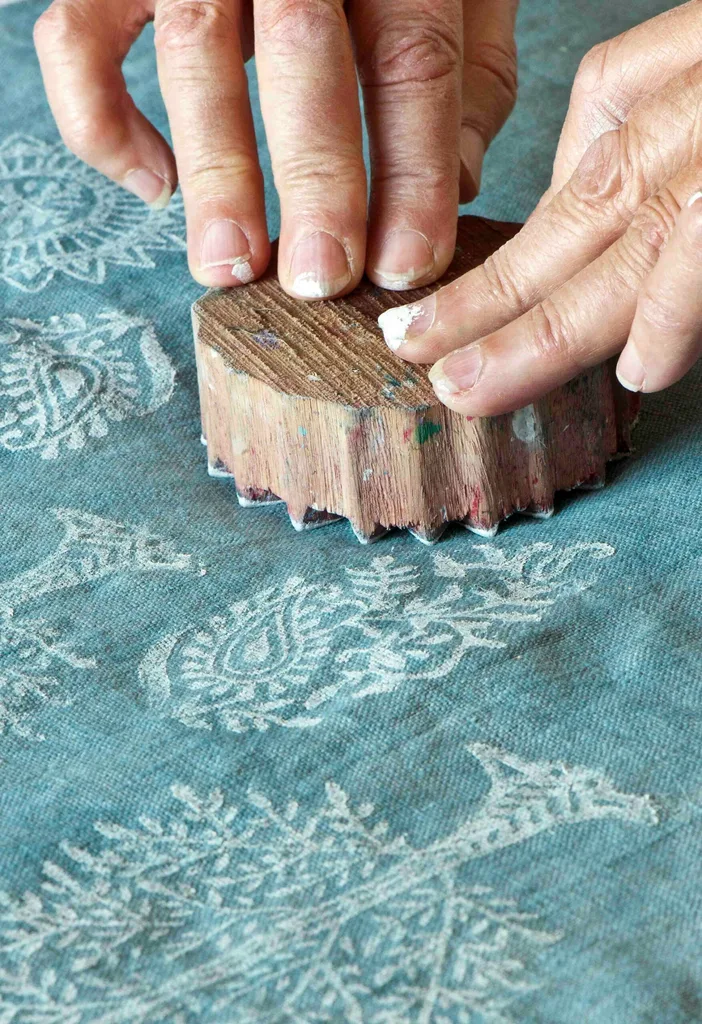
Photographer: Christopher Drake © CICO BooksRRP
Step 3. Apply the white paint to the printing block with the sponge roller, being careful not to get too much paint on the block. Place the printing block on the fabric, checking that it is positioned correctly. Apply an even amount of pressure on the block so that the design prints consistently.
Step 4. Iron the fabric on a warm setting to set the colour. The fabric can be washed on a light wash, although you might lose a little of the strength of the colour. Annie washed the dyed linen before printing on this piece of fabric.

Photographer: Christopher Drake © CICO BooksRRP
Step 5. Make up the cushion with the insert in place before sewing up the last side. Annie left the green-dyed linen on the back of the cushion plain.
Note: For instructions on making up the pillow, visit www.anniesloan.com/techniques
This is an edited extract from Annie Sloane Paints Everything by Annie Sloane published by CICO Books $39.99 and is available in stores nationally from November 2016.

The final product.
(Credit: Photographer: Christopher Drake © CICO BooksRRP)
